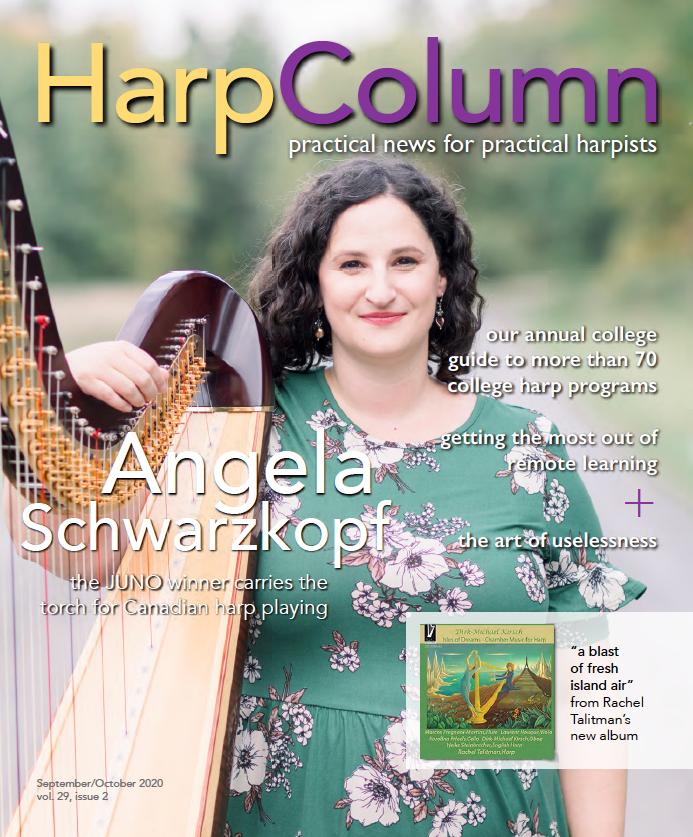In the last two weeks I have both played my first in-person gig and taught my first in-person lesson since March. Like every other musician, my calendar had been a vast gig-less void except for a couple of virtual concerts, thanks to the coronavirus. Packing up my instrument for the first time in months, I literally had to brush cobwebs off my harp cart. Preparing to host my first student since March, I was happy to put away my camera and set up my smaller student harp and footstool.
“I was overcome with how good it felt to be playing music for others. Everything about the gig felt more meaningful.”
I’ve played countless weddings and taught scores of lessons over the years, but both of these “firsts” felt significant. As the wedding coordinator gave me the lowdown on all of the standard ceremony cues, I said to her, “I’ve never been more excited to play a wedding.” And it was the truth—playing “Liebestraum” as the bridesmaids processed down the aisle, I was overcome with how good it felt to be playing music for others. Everything about the gig felt more meaningful. Sure, there were the masks, and the distancing, and the mostly empty church pews. But despite these reminders of the ongoing pandemic, the wedding provided a small taste of normalcy that I didn’t know how much I needed.
The following week, my 10-year-old student walked in for her lesson and blew me away. We had been having weekly lessons online, but the last time I saw her in person she was 9 years old, about four inches shorter, and a whole lot more timid. She had grown so much she almost didn’t need that footstool I got out for her. She had an air of confidence and maturity about her I hadn’t noticed on our Zoom lessons. And when she played her first piece on my pedal harp (after practicing for months on her Troubador at home), her big warm sound and beautifully rolled chords surprised us both. When we were all forced to take our lessons online in the spring, I hoped we could maintain where she was technically, stay motivated to practice regularly, and maybe, if we both did our best, make some progress. Listening to her shape her phrases and dig into her chords in a way I couldn’t hear on a Zoom call left me amazed. Something good had come from this mess.
Turns out I’m not the only one finding silver linings and renewed spirits nearly a half a year into the age of COVID. This issue is bursting with positive discoveries made by harpists during the pandemic. In nearly every article in this issue, a harpist highlights something good that has appeared in our new musical lives.
For Detroit harpist Christa Grix, profound discoveries emerged from the simple act of focusing on the most fundamental elements of music during the darkest days of lockdown.
“I felt utterly useless, struggling to find meaning, value, and a future in my life’s work as a musician,” she relates in her article, “The Art of Uselessness” on pg. 16. To deal with such a crisis, Grix decided to put one foot in front of the other—both literally and figuratively—to pull herself through. Along with committing to walk four million steps during 2020, Grix committed herself to daily practice in a way she had never done before. The results are inspiring to musicians at any level.
While no teacher prefers online teaching to in-person lessons, Minnesota harpist Rachel Brandwein made the best of the situation and gained valuable insights she says will improve her teaching when she can return to face-to-face instruction. (See “Lessons Learned from Lessons Given” on pg. 10.)
Even our college guide article, “Navigating College in the Time of COVID” on pg. 24, is full of silver linings that students and teachers of all ages can appreciate. And if there is anything we can all use, it is more good news to help us carry on. •







